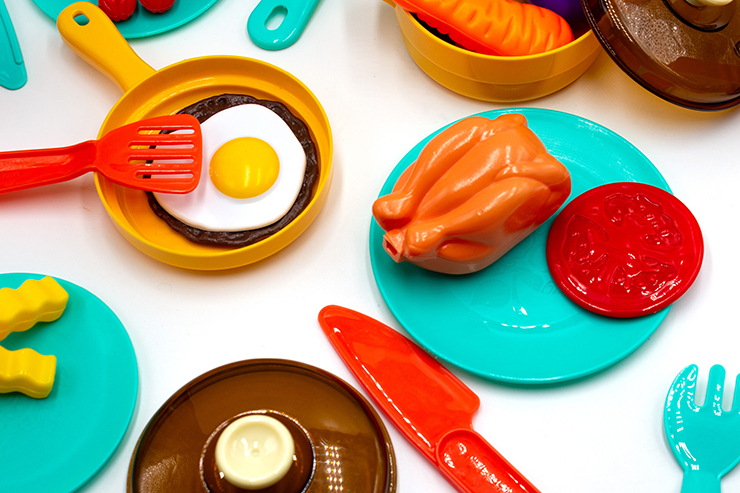
Immune systems are weaker during the early childhood years. It's important to ensure the food we’re serving to these little ones is safe for their tiny tummies. Fortunately, we can control the growth of bacteria by controlling the conditions they need in order to survive and grow to dangerous levels. These conditions are time, temperature, food, moisture, oxygen, and pH (level of acidity). When high-risk food is stored at the incorrect temperature for too long, bacteria can increase to dangerous levels. Cross-contamination from high-risk raw foods or unhygienic handling can also cause food poisoning.
Additionally, chemicals such as pesticides and cleaning products, and other things that shouldn't be present in food (such as dirt, hair, glass, or stones) can contaminate food and cause illness.
The risk of food becoming unsafe will depend on the types of food you serve and how food is stored, prepared, and handled.
What are ‘high-risk’ foods?
High-risk foods can include meat, seafood, poultry, eggs, and dairy products, or foods that contain these items, for example, sandwiches, quiches, and prepared salads. Other high-risk foods include cooked noodles, rice, and pasta.





Bacteria often grows in food that is undercooked, poorly reheated, or not refrigerated properly. Bacteria can also grow when the food is contaminated by dirty hands or dirty equipment.
Young children are likely to suffer more severe symptoms or consequences if they get food poisoning. Their stomachs produce less acid which makes it easier for harmful germs to get through the digestive system and invade their bodies.
Food poisoning symptoms range from mild dehydration to neuromuscular dysfunction or even death. Young children can also take longer to recover from food poisoning compared to adults.
Food Preparation Tips for Childcare Centers
Follow these simple food hygiene tips to reduce the risk of foodborne disease.
Don’t forget about personal hygiene
Everyone who handles food must understand and practice good personal hygiene. This will go a long way in preventing foodborne diseases. All staff who handle food should use the following personal hygiene practices, such as:
As childcare centers fall under the Standard 3.3.1 Food Safety programs for Food Service to Vulnerable Persons code, each facility is required to implement a documented and audited food safety program. When in doubt about how to handle high-risk food always refer to your Food Safety Program.
Need to update your current Food Safety Program?
Or perhaps review or create a new Food Safety Program? We can help! Our operational support professionals and food safety specialists can help to ensure you stay compliant. 
_1.png)